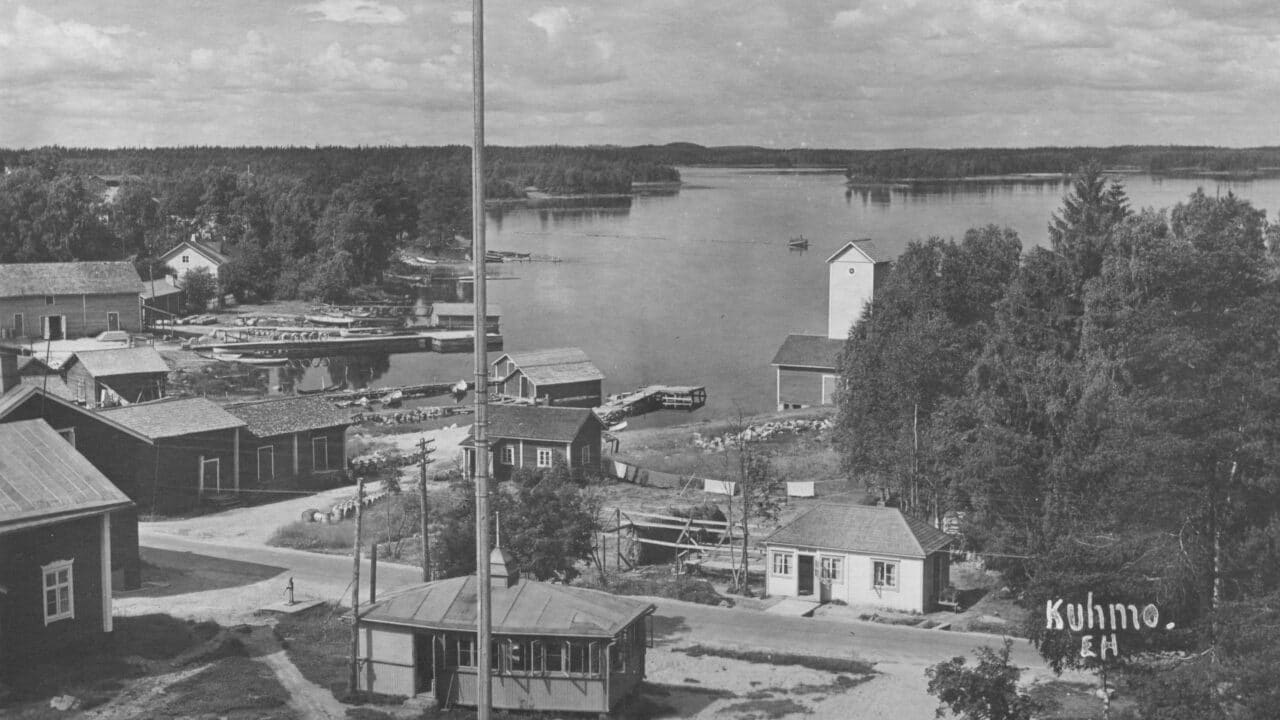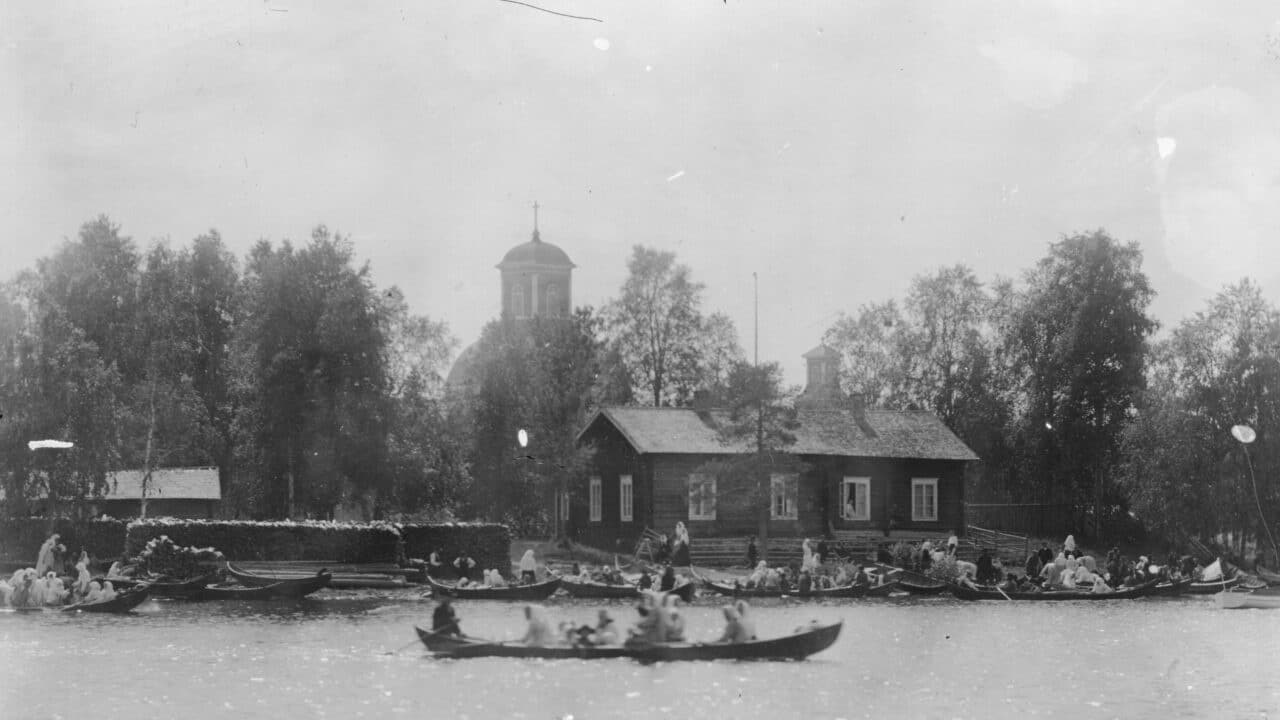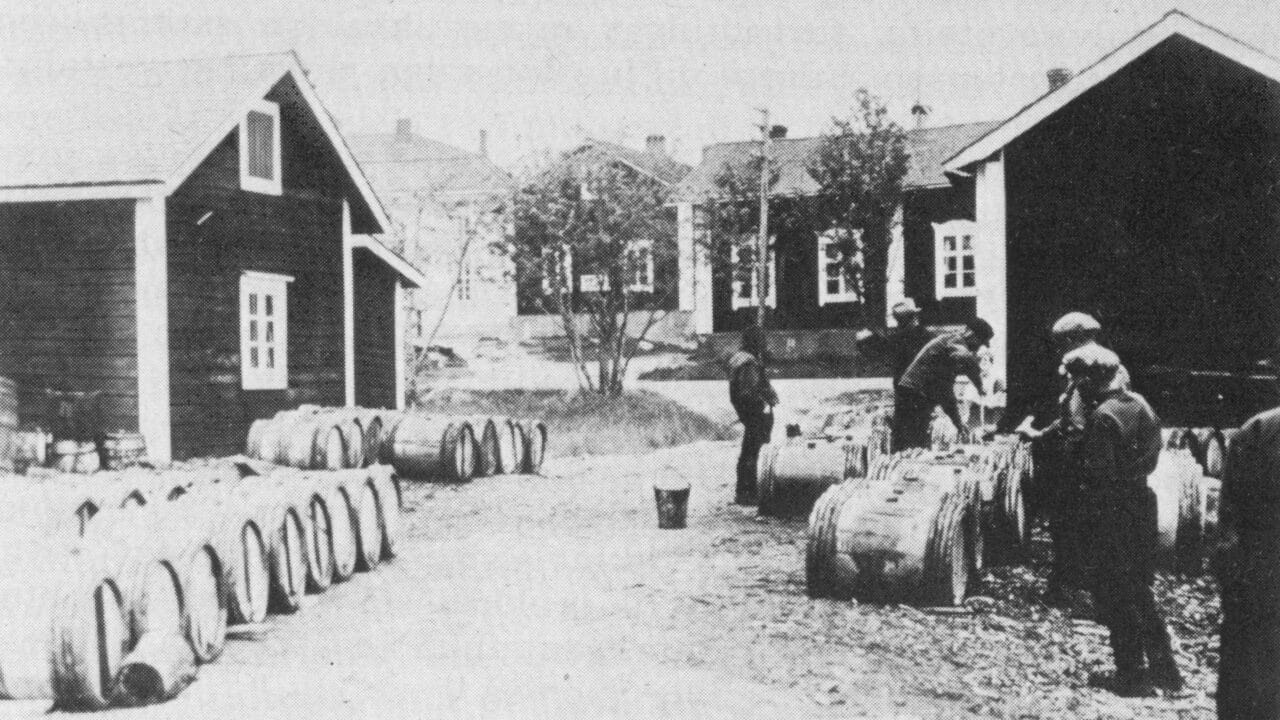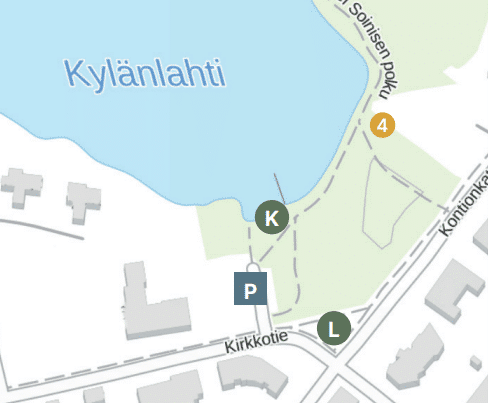
4. Maakunnanranta
Maakunnanranta was an important boat harbour, accessed via Lake Ontojärvi and Lake Lammasjärvi. The area around the waterfront was the centre of the village until the 1940s. The lakeside was scattered with piers and warehouses, and there were also several cafes and shops nearby.
The photo shows Maakunnanranta in the summer of 1938, with kiosks, sheds, a sauna, fire equipment depot and a new fire hose drying tower.

At the beginning of the 20th century, there were still extensive roadless areas in Kuhmo where forest paths, duckboards, and waterways were the available passages for moving about. Residents from remote villages often came to the parish village all together, travelling in large rowing boats, the so-called “church boats”. While in the parish village, they stayed in merchant’s cabins or with acquaintances and headed back home after Sunday’s divine service. The first motorboats operated on Lake Lammasjärvi in the 1910s, but rowing boats remained more common until the 1930s.

Pine wood tar became Finland’s most important export product in the 18th century. It was the main material for impregnating the hulls of wooden ships and the rigging of sailing vessels. During the 19th century, Kainuu region became the main supplier in tar production. In 1900, Kuhmoniemi produced over 12,000 barrels of tar, which was 24% of Kainuu’s and 15% of the entire country’s tar production.
Tar production was a multiphase process which took several years. The final tar produce was transported for sale to Oulu, along a water route. At the end of the tar era in the 1930s, barrels were taken by boat to the village, where they were loaded onto trucks for further transportation.

K. The Tar Rower’s Memorial (Risto Saalasti 1973)
L. The cogwheel from the Saarikoski ironworks, which operated from 1874 to 1877.
Maakunnanranta also has a landing stage for guest boats, a boat slipway, and a playground by the lakeside.